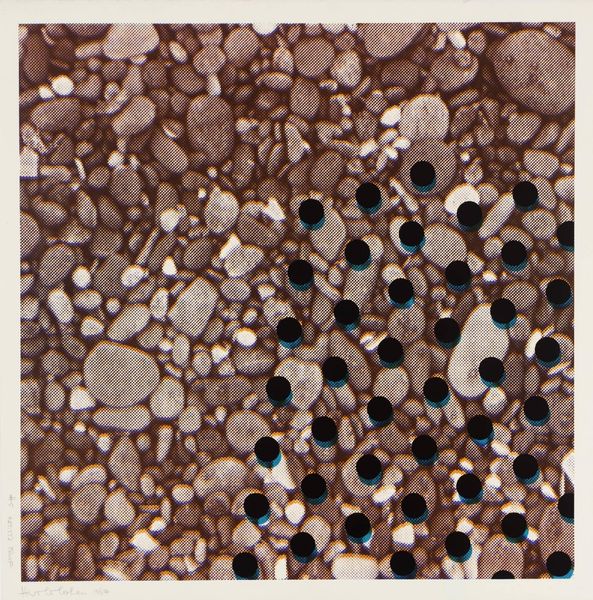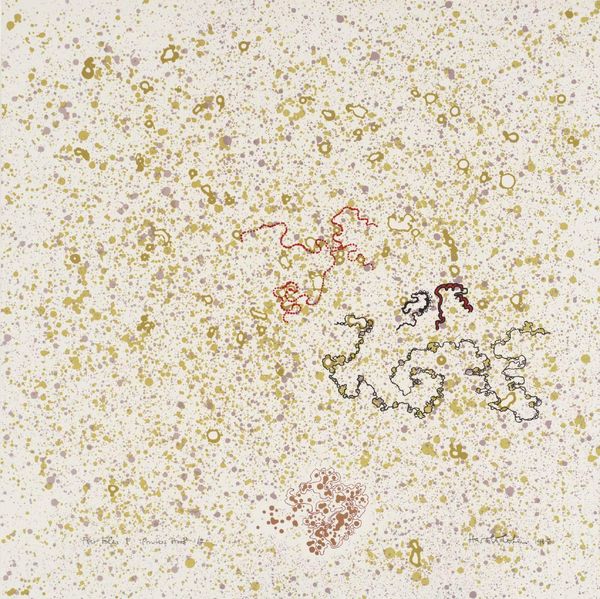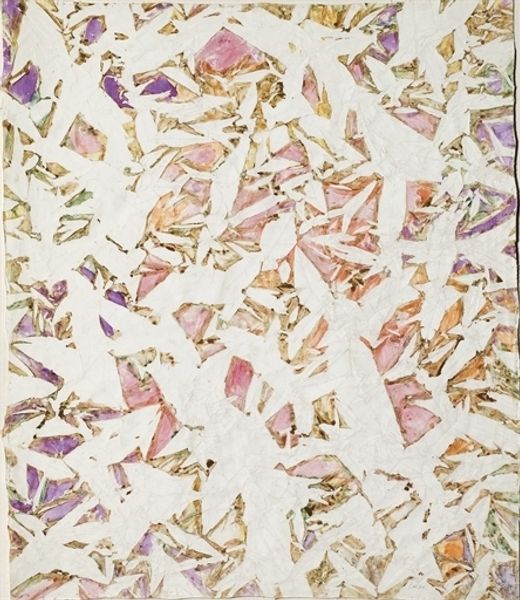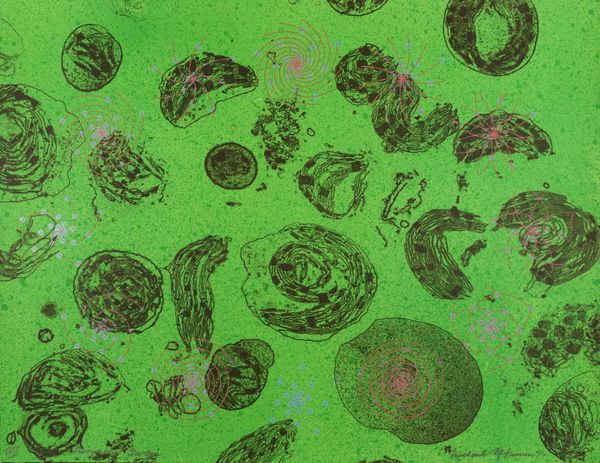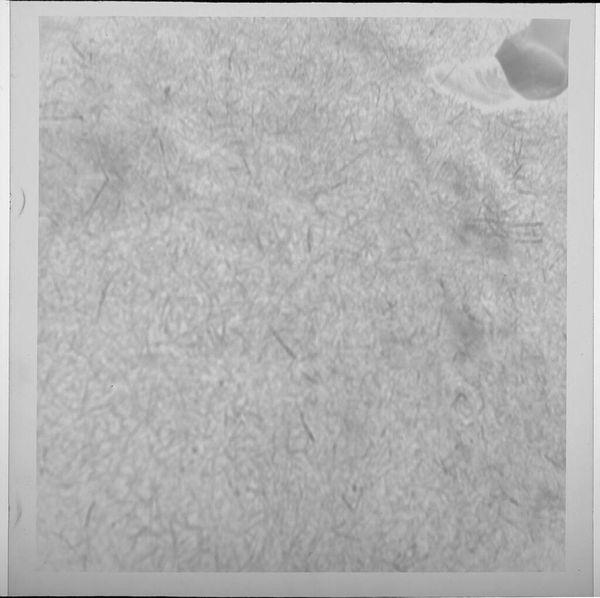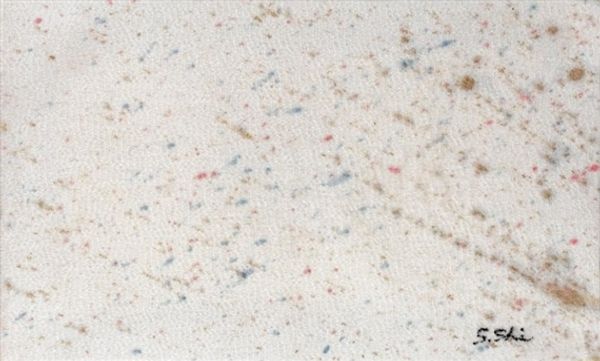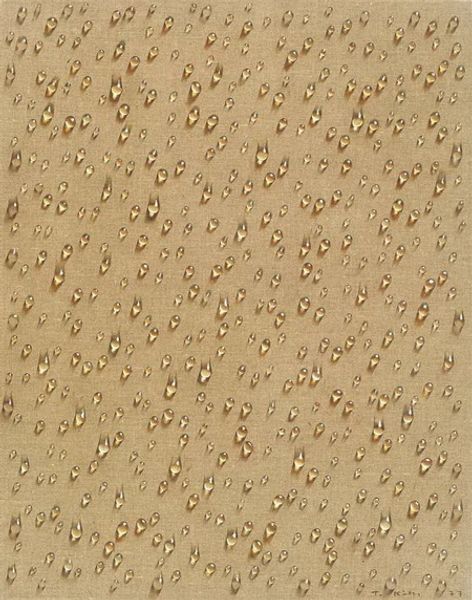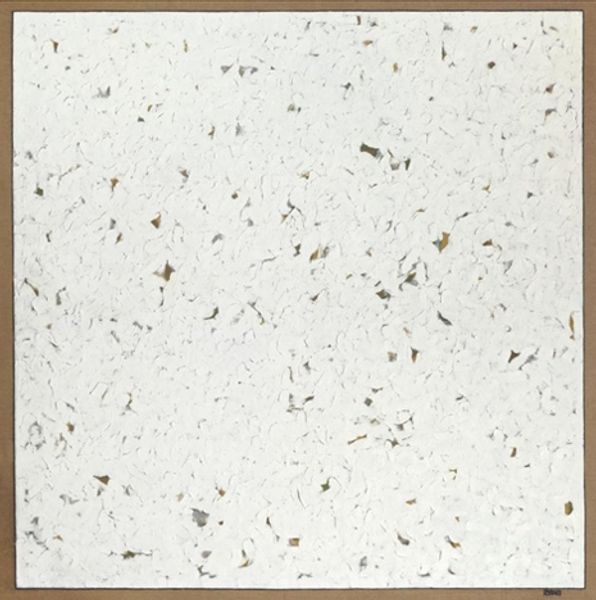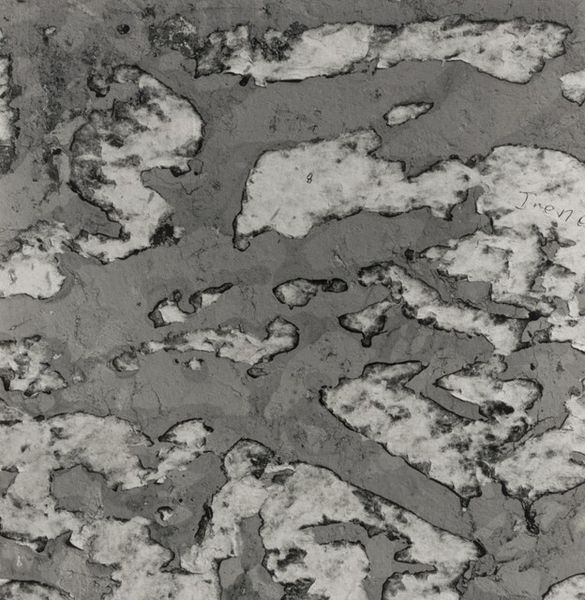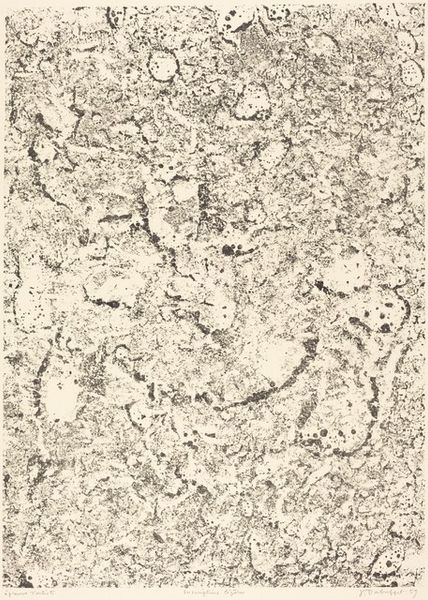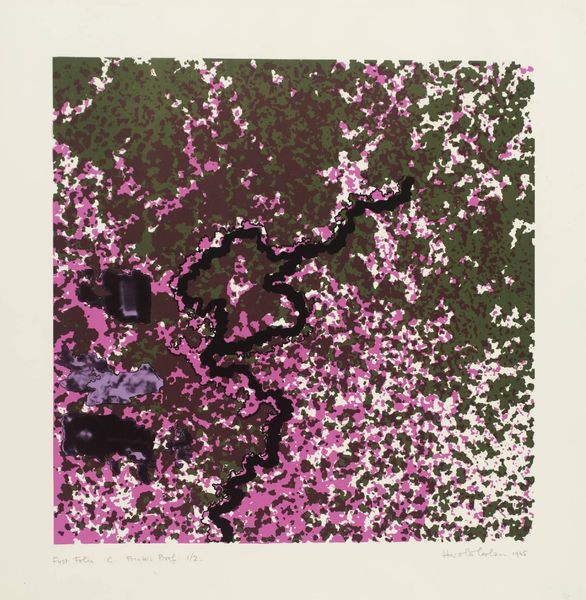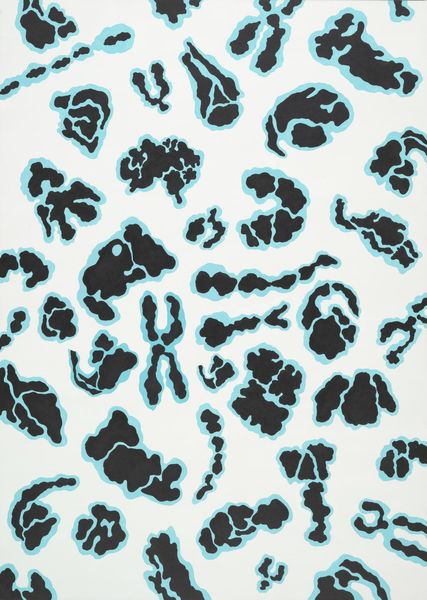
painting, acrylic-paint
#
abstract-expressionism
#
non-objective-art
#
painting
#
acrylic-paint
#
abstract
#
geometric pattern
#
abstract pattern
#
organic pattern
#
geometric
#
matter-painting
Copyright: Robert Ryman,Fair Use
Curator: Let’s turn our attention to this painting, simply titled "Untitled," created by Robert Ryman in 1960. It’s rendered in acrylic paint. What's your immediate reaction? Editor: It feels very delicate, almost like looking at the surface of a frozen lake where the ice is just beginning to crack. The limited palette certainly contributes to that impression. Curator: Indeed. Ryman’s focus wasn't necessarily on representation, but on the properties of the materials themselves. The '60s were such a fascinating time. Art institutions were really grappling with the legacy of Abstract Expressionism and how to move forward. Artists like Ryman became key figures in questioning those conventions. Editor: Absolutely. Looking at the application of the acrylic paint here, I'm drawn to its texture. You can see the individual strokes, the way he's layered and manipulated the material. It’s like he’s dissecting painting to its barest components: pigment, binder, surface. He treats his paint almost sculpturally. Curator: He pushes back against the idea of painting as merely illusionistic. Consider the cultural shift too. 1960 was a year of immense social change in America—the burgeoning Civil Rights Movement, increasing anxieties about the Cold War. Abstract art became a space for artists to reflect on the fragmentation and uncertainties of the era. Editor: I see what you mean. But I am also interested in how, by stripping away overt symbolism or narrative, Ryman forces us to confront the materiality of the work. I see not just paint but its application, the decisions and the labor that constitute "art," blurring boundaries. Where does craft end and art begin? Curator: Those distinctions became increasingly fluid during this period, challenging established hierarchies. Museums, galleries, even patrons had to re-evaluate what constituted valuable artwork. Editor: And Ryman's art is almost a commentary on those structures. What do we value and why? It almost feels defiant in its simplicity. Curator: Precisely. The canvas becomes a stage for this investigation. Ryman invites us to contemplate not just the object, but also the cultural apparatus that surrounds it. Editor: This exploration of materiality and technique provides a kind of grounded counterpoint to all the theorizing we've done here today. It is almost therapeutic to see the unvarnished product of manual skill and its impact on both visual and critical perception.
Comments
No comments
Be the first to comment and join the conversation on the ultimate creative platform.
